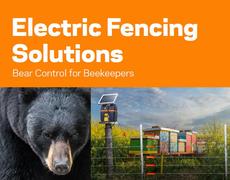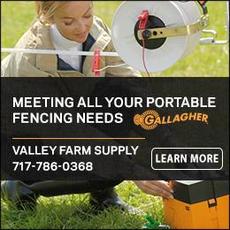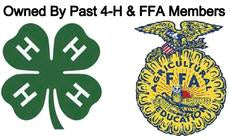Most grass-fed beef producers in the northeastern U.S. are also in the cow-calf business. Why is it that we hear so much about the increasing demand for grass-fed and local beef, yet so many of these producers struggle mightily with a lack of profitability? Basically, it seems to boil down to two facts:
1. Winter is long up here.
2. Brood cows eat a lot every day, particularly in the winter. Most beef producers in the Northeast must produce and/or purchase enough hay to feed the animals for 200 days per year or more.
Here are other reasons producers are frustrated with this "typical" system:
- Truly finishing an animal without grain takes a long time. It's not uncommon for animals to be well over 24 months of age before the desired weight and degree of marbling is reached.
- Land is scarce, and much of it must be devoted to producing hay to feed brood cows through long winters.
- Managing multiple groups of animals requires more time and facilities.
So why do we do this to ourselves? No doubt there are many reasons. Most producers clearly enjoy the feeling of accomplishment that comes along with completing the cycle from calving to marketing. Others are really into genetics - breeding just the right type of animal. Some people simply enjoy the way of life, and they have land and the other resources necessary to raise cattle, so they do. Having cows and calves on the farm feels good; it meshes nicely with our psyche.
There's nothing inherently wrong with any of the above reasons for having cattle. The problem that slowly but surely overtakes many beef producers in Northern Tier states is financial loss. The brood cow eats nearly 30 pounds of hay per day, and depending on the type of hay feeder, she can easily waste an additional 20 percent. Between consumption and waste, a 1,200-pound cow will often use more than 3.6 tons of hay over the course of a 200-day hay-feeding season.
Considering all the expenses in the enterprise budget, it costs about $1,470 to produce an 800-pound feeder calf, which equates to about $1.80 per pound on a live weight basis. While an individual may argue with particular lines included in the budget, we believe that these costs are an accurate reflection of what a typical grass-fed beef producer experiences.
There's nothing wrong with raising a calf at that cost, as long as you make up for it when you sell it. The problem is that many farmers don't. Every farmer should have some idea of the net return they need to get per animal in order to make the operation worth their while. They should also be tracking their progress toward that end.
Capitalizing on our strengths
We grow beautiful grass and legume forages in Vermont and much of New England, pastures on which feeder-sized animals will finish more easily than many places in the U.S. Achieving proper finish on a grass-fed animal is a high-value activity that we can do well in the Northeast. Managing a cow-calf operation certainly has value, but doing it in a cost-efficient manner requires resources that we do not have, namely a very long grazing season. The value that pastures in the Northeast have for cow-calf production is more than offset by the staggering expense of keeping the brood cow through the long winters.
Consider the following illustration: For an animal born on the farm, if everything goes well, the total cost of producing a finished 1,200-pound grass-fed animal is about $2,100, not including labor and management charges. When selling whole animals, halves and quarters, producers usually sell on a hot carcass weight (HCW) basis. If the HCW is average, it will be about 60 percent of the live weight: 1,200 (pounds) x 0.60 = 720 pounds.
Given these assumptions, producers need to charge over $3 per pound HCW (not including slaughter and wrapping charges) just to recover their investment and pay themselves about $100 per animal. While some farmers are charging much more than $3 per pound HCW, many farmers are not. So what? The purpose here is not simply to point out that making a profit in grass-fed beef production in the Northeast is difficult, but to demonstrate the need for more profitable production models.
The alternative model we will discuss is often disliked because it involves selling most of the brood cows to which we have become so attached (they have names). Feeder-sized animals (700 to 900 pounds) can often be purchased for significantly less than it would cost to produce them. With the hungry brood cow gone and many of the purchased feeder steers being finished and sold before or partway through the winter, nearly twice as many animals can be finished per acre, and the amount of stored feed needed each year can be significantly reduced.
The idea that feeder-sized beef animals can be purchased at a reasonable cost from within and outside of the northeastern U.S. is not news to most producers. The concept that it might actually be a good substitute for the status quo might be new to some. If feeders are not available locally, they can be purchased from areas within a 12-hour truck drive. With a delivery charge, that will probably be $50 per animal or less if they are purchased in 50,000-pound loads.
While commodity prices (including feeder steers and heifers) are near all-time highs at present, this approach will usually be a less costly option than raising an animal of an equivalent size from birth in the Northeast. If this is such a good idea, why do so many grass-fed beef producers in the Northeast own brood cows instead of shipping in feeders? In next month's column, we will discuss common objections to this alternative system.
Daniel Hudson is an agronomist with University of Vermont Extension. Joe Emenheiser is a livestock specialist with University of Vermont Extension.







